All India Radio: August 20, 2025
/Many thanks to SRAA contributor Carlos Latuff, who shares the following field recording of All India Radio on 9620 kHz made on August 20, 2025 at 19:34 UTC in Porto Alegre, Brazil.
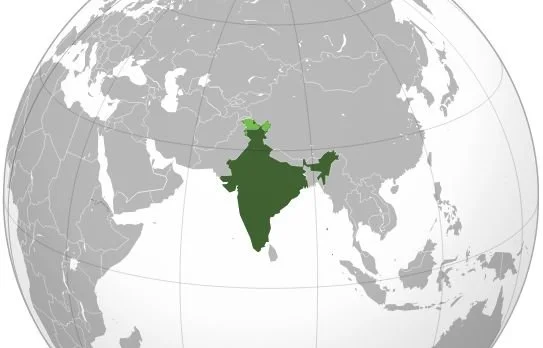
Many thanks to SRAA contributor Carlos Latuff, who shares the following field recording of All India Radio on 9620 kHz made on August 20, 2025 at 19:34 UTC in Porto Alegre, Brazil.

Many thanks to SRAA contributor Paul Walker, who shares the following field recording of the Voice of Korea on 11,910 kHz made on August 29, 2025 at 18:51 UTC in McGrath, Alaska. Paul notes that the recording begins in French then moves to their English language service.
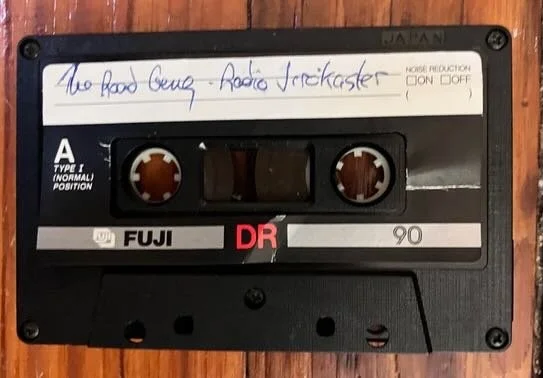
Many thanks to SRAA contributor David Goren, who shares the following recording of Radio Gjirokaster recorded in January 1988. David notes that a column in MT from 1988 reported the frequency as 5057 kHz, although he logged it as 5060 kHz at the time. David was using his Panasonic RF-2900 as a receiver. He has also kindly shared the following photos of his logs and the cassette tape notes.
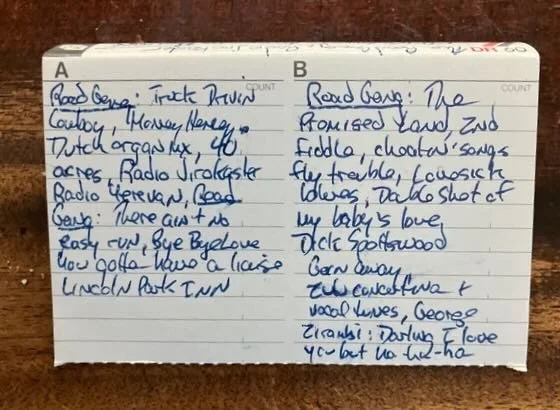
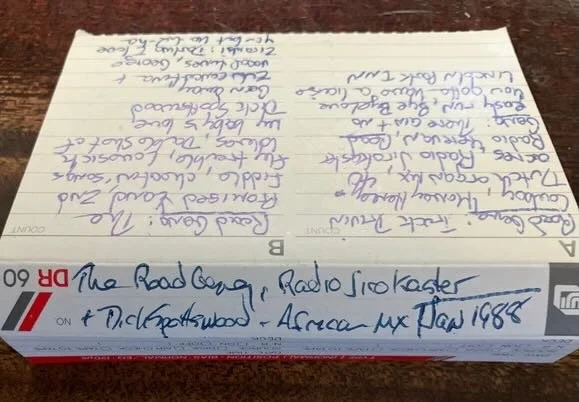
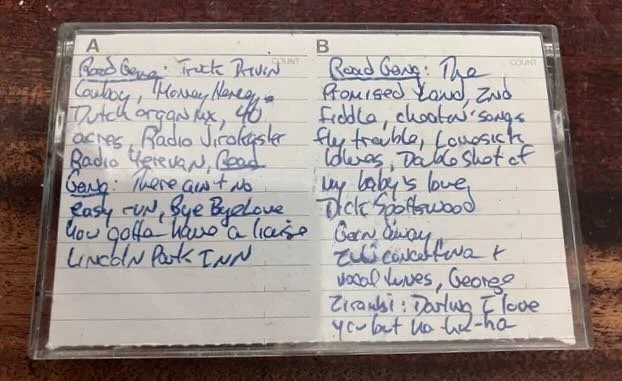
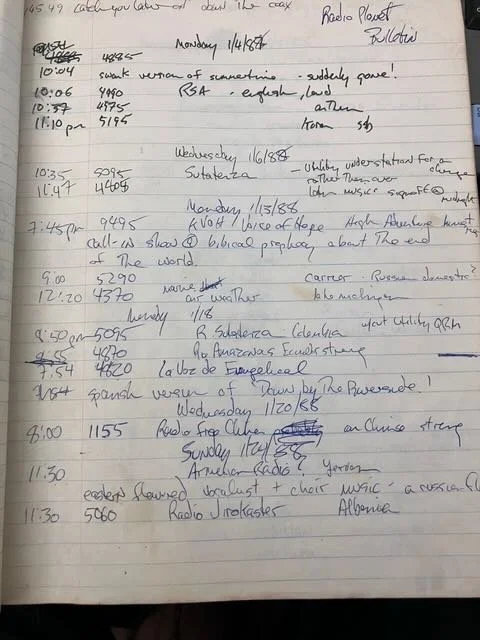
David notes:
Found this little scrap on an old cassette…it’s the middle of a recording of the Road Gang, the trucking show I was obsessed with at the time…and of course I would tune around during it sometimes and I marked the cassette…I have Gjirokaster and Yerevan in the same segment
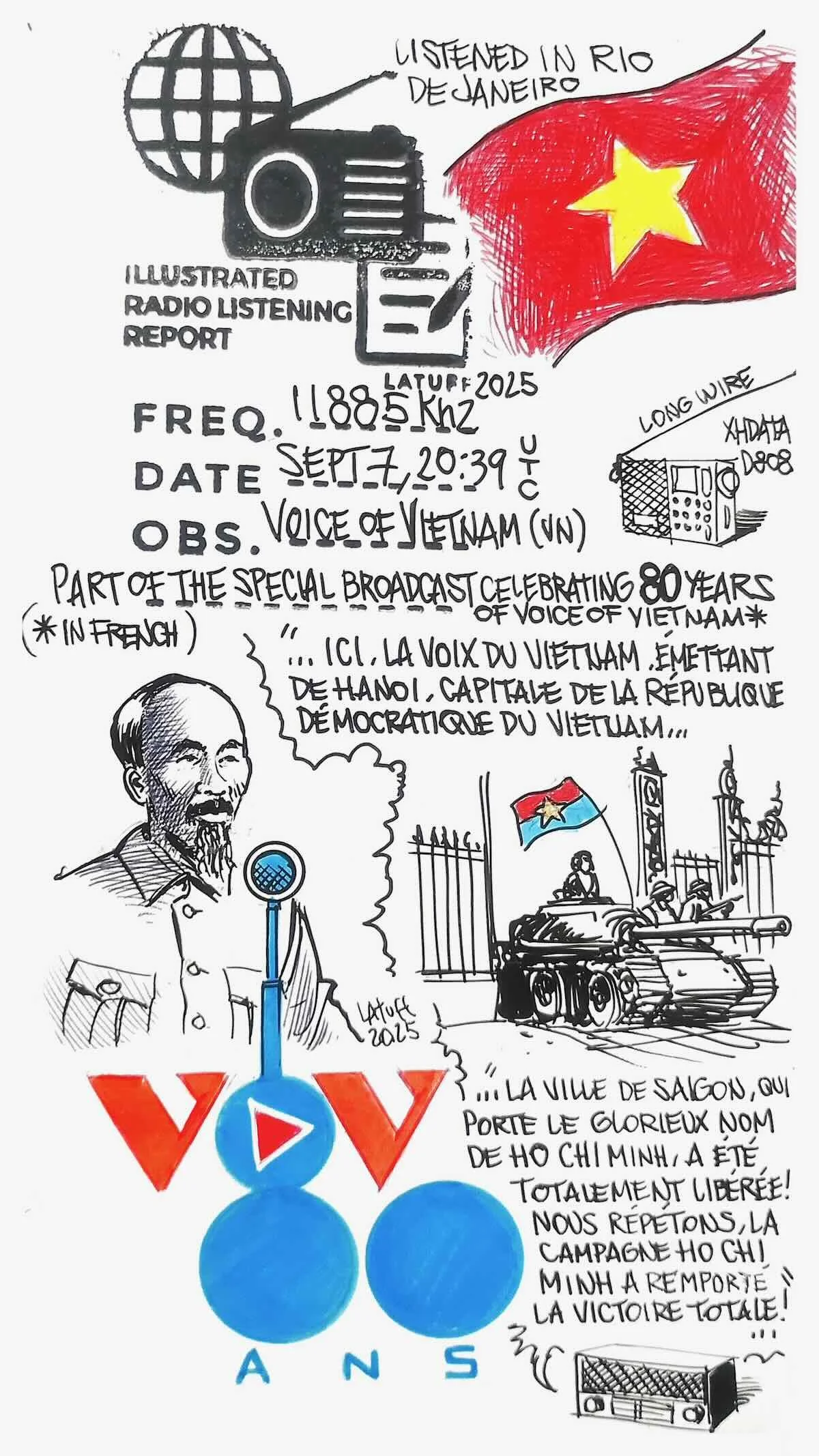
Many thanks to SRAA contributor Carlos Latuff, who shares the following recording and illustrated listening report for this Voice of Vietnam broadcast celebrating their 80th anniversary. This recording was made on September 7, 2025 at 20:39 UTC on 11,885 kHz from Rio de Janeiro, Brazil:
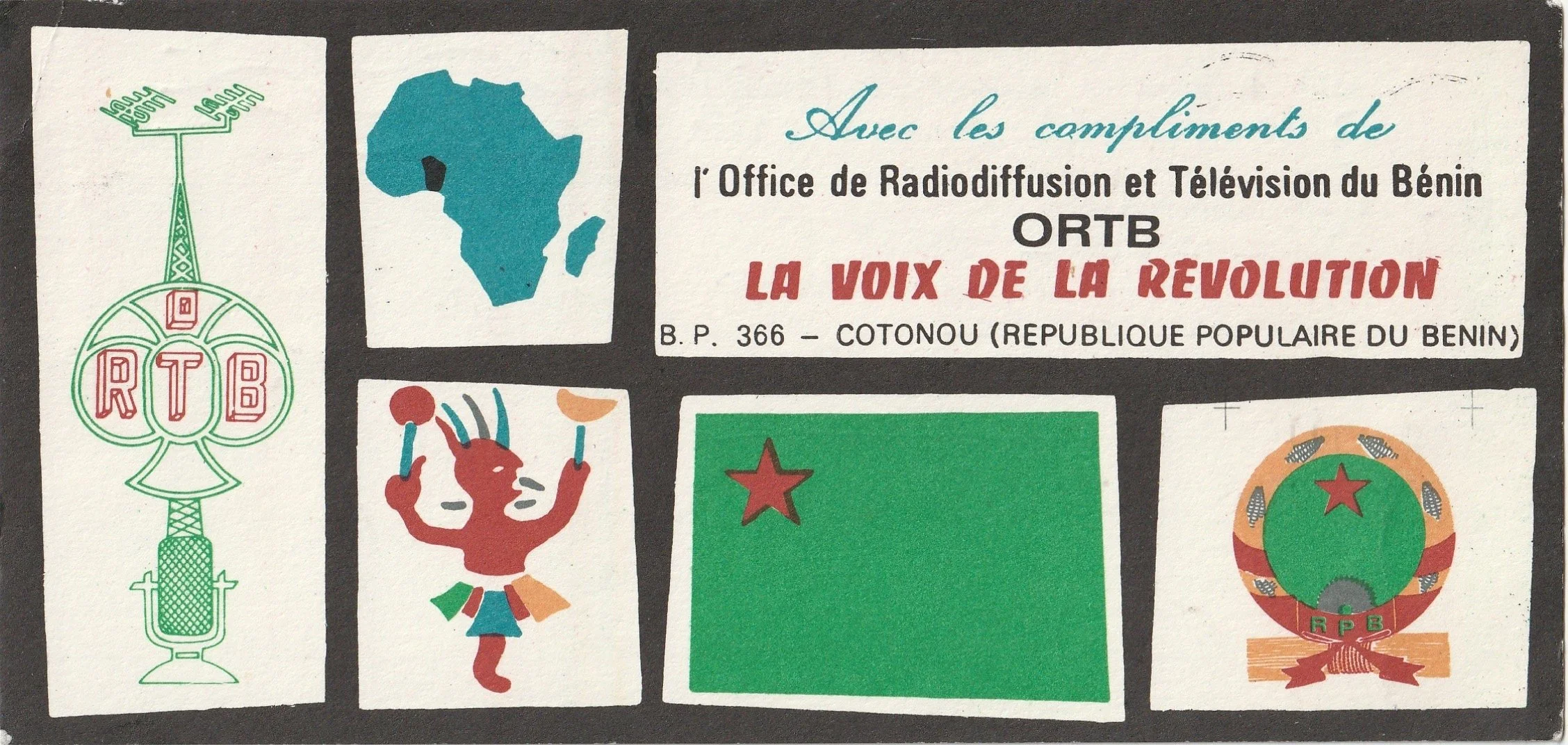
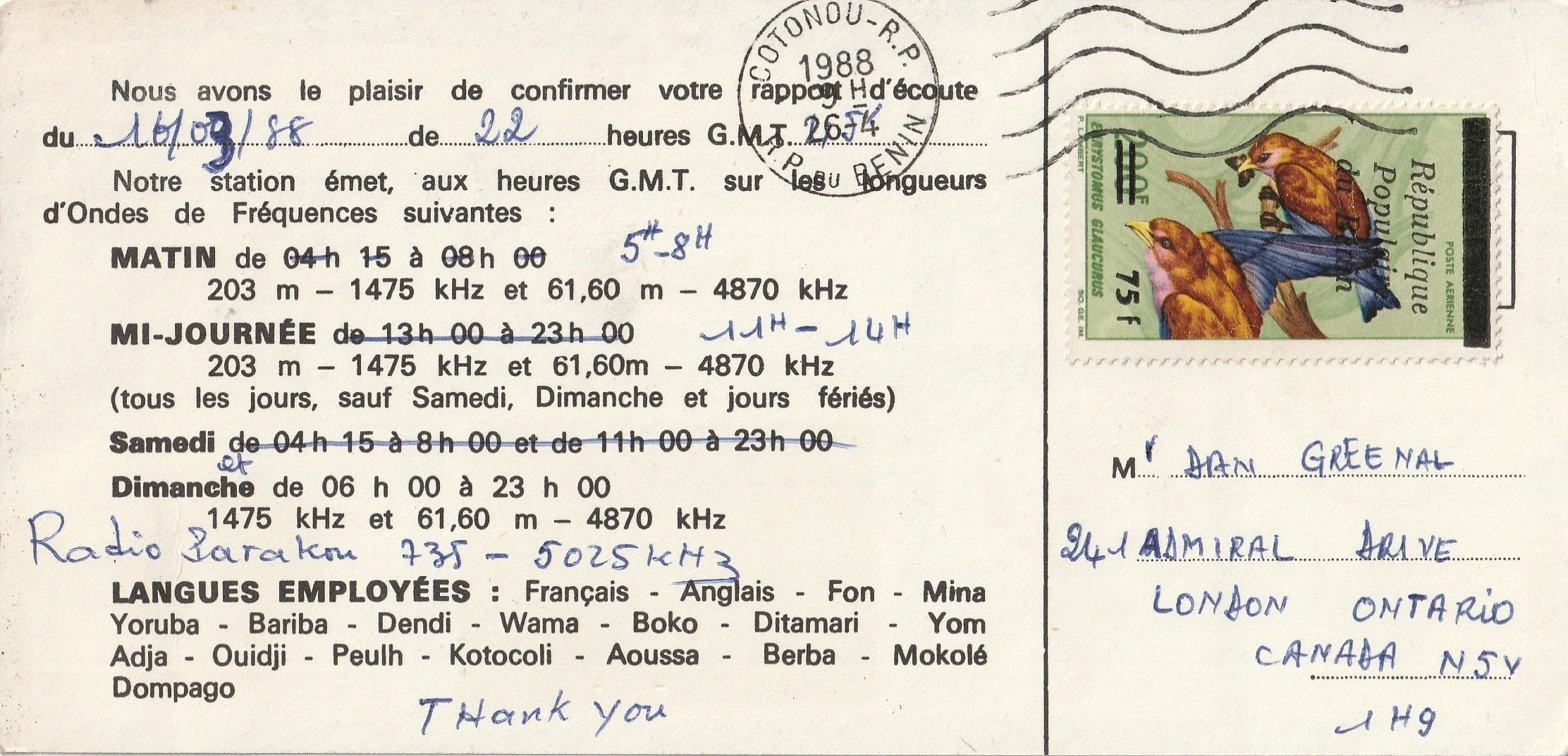
Many thanks to SRAA contributor, Dan Greenall, who shares the following recording and notes:
Broadcaster: Radiodiffusion du Dahomey, Circa 1971
Frequency: 4.870 MHz
Reception location: Ancaster, Ontario, Canada
Receiver and antenna: Hallicrafters S-52 using a longwire antenna
Notes: Prior to 1975, the country of Benin in West Africa was called Dahomey. This recording, made in 1971, is Radiodiffusion du Dahomey in Cotonou signing off for the day. While the signal level on 4870 kHz is only fair at best, the announcement in French can be heard giving frequency information followed by "Ici Cotonou, Radiodiffusion du Dahomey" just before the end of the recording. Reception location was Ancaster, Ontario, Canada and equipment used was a Hallicrafters S-52 and a long wire antenna.
Also attached is a short recording from the 1990's of Radiodiffusion Nationale du Benin in French with a voice announcement and ID just prior to sign off. Also on 4870 kHz, but using a Panasonic RF-3100 receiver and a long wire antenna in Thamesford, Ontario, Canada.

Many thanks to SRAA contributor, Liam Spencer, who shares the following recording and notes:
Broadcaster: Radio Romania International
Date of recording: March 04, 2024
Starting time: 01:40 UTC
Frequency: 7.325 MHz
Reception location: Berthoud, Colorado, USA
Receiver and antenna: Unbranded AM, FM, SW receiver with telescopic antenna
Notes: Recording of Radio Romania's DX Mailbag dated Saturday, March 2nd, 2024. This recording was made the following Monday when they repeat the DX Mailbag.

Many thanks to SRAA contributor, Emanuele Pelicioli, who shares the following recording and notes:
Broadcaster: Swiss Radio International
Date of recording: Circa 1993
Starting time: 14 CET
Frequency: 6165 kHz
Reception location: Bergamo, Italy
Receiver and antenna: Multiband Radio Fenner
Notes: This recording was originally on tape, I made it in 1993. I don't remember which month. It was from Studio Aperto, the Italian program of Swiss Radio International, which airs on Sunday at 14 CET. They used to read listeners' letters and create mini-games. This was the first time they read one of my letters.

Many thanks to SRAA contributor, Martin Knotek, for sharing the following recording and notes:
Broadcaster: The Buzzer
Date of recording: August 08, 2025
Starting time: 19:17 UTC
Frequency: 4625 kHz
Your location: Zlin, Czech Republic
Receiver and antenna: http://websdr.ewi.utwente.nl:8901/
Mode: Single Side Band
Notes: The Buzzer online 08. 08. 2025 v 19:17 UTC.
You can hear the Russian anthem about halfway through the recording.
The Buzzer (UVB-76) is a mysterious Russian shortwave radio station that has broadcast a constant buzzing sound since the late 1970s, occasionally interrupted by voice messages in Russian, with its true purpose still unconfirmed.

Many thanks to SRAA contributor Dan Greenall, who shares the following recording and notes:
Broadcaster: Republic of Yemen Radio via Jeddah, Saudi Arabia transmitter
Frequency: 11.935 MHz
Reception location: Addis Ababa, Ethiopia and Riyadh, Saudi Arabia
Receiver and antenna: remote Kiwi SDR
Notes: Two recordings of Republic of Yemen Radio broadcasting in Arabic on 11935 kHz shortwave from a transmitter located in Jeddah, Saudi Arabia. Reported transmitter power is 50 kw.
February 15, 2025 at 1959 UTC, good signal, no hum, received using SDR located in Addis Ababa, Ethiopia
April 9, 2025 at 1658 UTC, bad hum or buzz on their signal, received using SDR located in Riyadh, Saudi, Arabia
This station has not been heard more recently.

Many thanks to SRAA contributor Dan Greenall, who shares the following recording and notes:
Broadcaster: WYFR Scituate MA transmitter
Date of recording: May 02, 1974
Frequency: 17.785 MHz
Reception location: Ancaster, Ontario, Canada
Receiver and antenna: Realistic DX-150A with long wire antenna
Notes: Your Family Radio, WYFR is heard here via their Scituate, Massachusetts transmitter on May 2, 1974 at 2200 hours UTC on 17785 kHz shortwave.
The station has a very colorful history:
W2XAL (1927–1929)
W1XAL (1929–1939)
transmitter moved from Boston to Scituate, MA in 1936
WRUL (1939–1966)
WNYW (1966–1973)
WYFR (1973-2013)
transmitter moved to Okeechobee, FL in 1977
transmitter purchased by WRMI in December 2013

Many thanks to SRAA contributor, Paul Watson, who shares the following recording. Paul notes:
“During the 1980s I was listening to shortwave radio from my home near London, in the southeast of England. I had a cassette recorder connected to the receiver and taped anything interesting that caught my ear. Little did I know that 40 years later the majority of these stations would have disappeared and I would have the opportunity to share these recordings with the world.”
This recording is part of a five-part compilation series Paul has created, grouping international shortwave broadcasters by region. The majority of the clips are in English and feature interval signals, station IDs, and sign-ons/offs—a rich snapshot of shortwave radio during its Cold War-era heyday.
This particular compilation focuses on: Eastern Europe and USSR
All recordings were made during the 1980s, most in the first half of the decade. While frequencies and exact dates aren’t provided, Paul has kindly included timestamps noting when each broadcaster appears in the audio. These are listed below for easy reference.
We’re grateful to Paul for sharing this excellent audio time capsule and for his efforts to preserve and document the golden era of international broadcasting.
ALBANIA: Radio Tirana (0)
BELARUS: Radio Minsk (1.18)
BULGARIA: Radio Sofia (1.41)
CZECHOSLOVAKIA: Radio Prague (2.29)
ESTONIA: Radio Tallin (2.50)
GERMANY (EAST): Radio Berlin Int (3.49)
HUNGARY: Radio Budapest (5.22)
LATVIA: Radio Riga (6.31)
LITHUANIA: Radio Vilnius (7.14)
POLAND: Radio Polonia (8.30)
ROMANIA: Radio Bucharest (9.37)
UKRAINE: Radio Kiev (10.41)
USSR: Radio Moscow World Service (12.17)
Radio Station Peace & Progress (13.35)
Radio Station Rodina (13.59)
YUGOSLAVIA: Radio Yugoslavia (14.21)
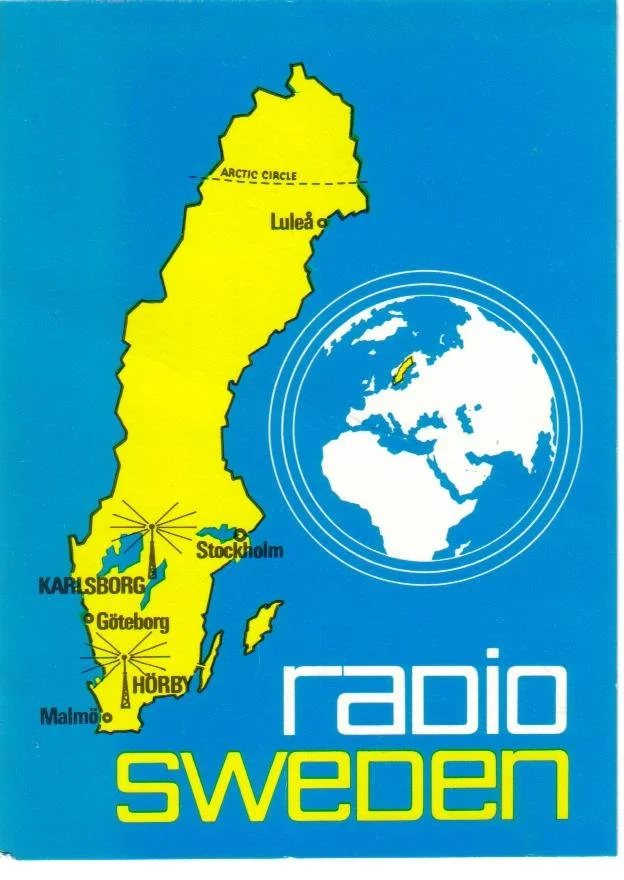
Many thanks to SRAA contributor, Paul Watson, who shares the following recording. Paul notes:
“During the 1980s I was listening to shortwave radio from my home near London, in the southeast of England. I had a cassette recorder connected to the receiver and taped anything interesting that caught my ear. Little did I know that 40 years later the majority of these stations would have disappeared and I would have the opportunity to share these recordings with the world.”
This recording is part of a five-part compilation series Paul has created, grouping international shortwave broadcasters by region. The majority of the clips are in English and feature interval signals, station IDs, and sign-ons/offs—a rich snapshot of shortwave radio during its Cold War-era heyday.
This particular compilation focuses on: Western Europe
All recordings were made during the 1980s, most in the first half of the decade. While frequencies and exact dates aren’t provided, Paul has kindly included timestamps noting when each broadcaster appears in the audio. These are listed below for easy reference.
We’re grateful to Paul for sharing this excellent audio time capsule, and for his efforts to preserve and document the golden era of international broadcasting.
AUSTRIA: Radio Austria International (0)
CYPRUS: Cyprus Broadcasting Company (1.40)
DENMARK: Radio Denmark (3.09)
FINLAND: Radio Finland (4.29)
FRANCE: Radio France Internationale (5.30)
GERMANY (WEST): Deutsche Welle (6.30)
GREECE: Voice of Greece (7.53)
ITALY: RAI (9.24)
MALTA: Radio Mediterranean (11.00)
NETHERLANDS: Radio Netherlands (12.21)
NORWAY: Radio Norway (13.34)
PORTUGAL: Radio Portugal (15.34)
SPAIN: Spanish Foreign Radio (16.32)
SWEDEN: Radio Sweden (18.17)
SWITZERLAND: Swiss Radio International (19.53)
Red Cross Broadcasting Service (20.38)
UNITED KINGDOM: BBC World Service (21.49)

Many thanks to SRAA contributor, Paul Watson, who shares the following recording. Paul notes:
“During the 1980s I was listening to shortwave radio from my home near London, in the southeast of England. I had a cassette recorder connected to the receiver and taped anything interesting that caught my ear. Little did I know that 40 years later the majority of these stations would have disappeared and I would have the opportunity to share these recordings with the world.”
This recording is part of a five-part compilation series Paul has created, grouping international shortwave broadcasters by region. The majority of the clips are in English and feature interval signals, station IDs, and sign-ons/offs—a rich snapshot of shortwave radio during its Cold War-era heyday.
This particular compilation focuses on: Africa and the Middle East
All recordings were made during the 1980s, most in the first half of the decade. While frequencies and exact dates aren’t provided, Paul has kindly included timestamps noting when each broadcaster appears in the audio. These are listed below for easy reference.
We’re grateful to Paul for sharing this excellent audio time capsule, and for his efforts to preserve and document the golden era of international broadcasting.
ALGERIA: Radio Algiers (0)
EGYPT: Radio Cairo (1.03)
IRAN: Voice of the Islamic Republic of Iran (2.33)
IRAQ: Radio Baghdad (4.17)
ISRAEL: Kol Israel (6.33)
KUWAIT: Radio Kuwait (8.00)
LEBANON: Voice of Lebanon (9.29)
LIBYA: Radio Jamariyah (10.18)
NIGERIA: Radio Nigeria (12.15)
QATAR: Qatar Broadcasting Service (13.53)
SAUDI ARABIA: Broadcasting Service of Kingdom of Saudi Arabia (14.21)
SOUTH AFRICA: Radio RSA (15.45)
SYRIA: Radio Damascus (17.37)
TURKEY: Voice of Turkey (18.40)
UNITED ARAB EMIRATES: UAE Radio (19.50)

Many thanks to SRAA contributor, Paul Watson, who shares the following recording. Paul notes:
“During the 1980s I was listening to shortwave radio from my home near London, in the southeast of England. I had a cassette recorder connected to the receiver and taped anything interesting that caught my ear. Little did I know that 40 years later the majority of these stations would have disappeared and I would have the opportunity to share these recordings with the world.”
This recording is part of a five-part compilation series Paul has created, grouping international shortwave broadcasters by region. The majority of the clips are in English and feature interval signals, station IDs, and sign-ons/offs—a rich snapshot of shortwave radio during its Cold War-era heyday.
This particular compilation focuses on: Asia & the Pacific
All recordings were made during the 1980s, most in the first half of the decade. While frequencies and exact dates aren’t provided, Paul has kindly included timestamps noting when each broadcaster appears in the audio. These are listed below for easy reference.
We’re grateful to Paul for sharing this excellent audio time capsule, and for his efforts to preserve and document the golden era of international broadcasting.
Afghanistan: Radio Afghanistan (0)
Australia: Radio Australia (1.55)
Bangladesh: Radio Bangladesh (3.18)
China: Radio Peking (4.23)
India: All India Radio (6.16)
Japan: Radio Japan (7.29)
Korea (North): Radio Pyongyang (9.02)
Korea (South): Radio Korea (12.26)
Malaysia: Voice of Malaysia (14.22)
New Zealand: Radio New Zealand (15.49)
Pakistan: Radio Pakistan (16.13)
Saipan: KFBS & KYOI (16.44)
Taiwan: Voice of the Free China (18.14)
Tajikistan: Radio Dushanbe (19.01)
Uzbekistan: Radio Tashkent (19.22)
Vietnam: Voice of Vietnam (20.16)

Many thanks to SRAA contributor, Paul Watson, who shares the following recording. Paul notes:
“During the 1980s I was listening to shortwave radio from my home near London, in the southeast of England. I had a cassette recorder connected to the receiver and taped anything interesting that caught my ear. Little did I know that 40 years later the majority of these stations would have disappeared and I would have the opportunity to share these recordings with the world.”
This recording is part of a five-part compilation series Paul has created, grouping international shortwave broadcasters by region. The majority of the clips are in English and feature interval signals, station IDs, and sign-ons/offs—a rich snapshot of shortwave radio during its Cold War-era heyday.
This particular compilation focuses on: The Americas
All recordings were made during the 1980s, most in the first half of the decade. While frequencies and exact dates aren’t provided, Paul has kindly included timestamps noting when each broadcaster appears in the audio. These are listed below for easy reference.
We’re grateful to Paul for sharing this excellent audio time capsule, and for his efforts to preserve and document the golden era of international broadcasting.
Bonaire: Trans World Radio (3.31)
Brazil: Radio Nacional do Brasil (4.32)
Canada: Radio Canada Int (6.58)
Chile: Voice of Chile (8.48)
Colombia: Radio Nacional (11.06)
Radio Sutatenza (12.00)
Cuba: Radio Havana (12.48)
Dominican Republic: La Voz del CID (14.20)
Radio Clarin (15.01)
Ecuador: HCJB (15.43)
Grenada: Radio Free Grenada (17.36)
Nicaragua: Voice of Nicaragua (18.42)
USA: Voice of America (19.54)
Radio Earth (20.33)
KCBI (21.39)
WHRI (22.13)
WRNO (22.38)
WYFR (22.49)
UN Radio (23.22)
Venezuela: Radio Turismo (24.48)
Radio Tachira (25.31)
YVTO (26.06)

Photo of Taipei Photo by TangChi Lee
Many thanks to SRAA contributor Kanwar Sandhu, who shares the following test broadcast recording of Radio Taiwan International recorded on June 29, 2025, at 1730 UTC on 11995 kHz:

Many thanks to SRAA contributor Dan Greenall, for sharing the following recording and notes:
Broadcaster: All India Radio 1971
Frequency: 11.810 MHz
Reception location: Ancaster, Ontario, Canada
Receiver and antenna: Hallicrafters S-52 using a longwire antenna
Notes: This transmission to southeast Asia from the general overseas service of All India Radio was heard surprisingly well in Ancaster, Ontario, Canada on 11810 kHz shortwave back in 1971. Their familiar interval signal is heard at first, followed by sign on in English.
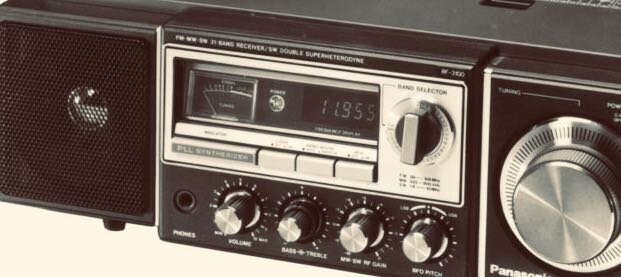
Many thanks to SRAA contributor Dan Greenall, who shares the following recording and notes:
Broadcaster: WREC Radio Free East Coast Pirate 1997
Date of recording: August 31, 1997
Frequency: 6.955 MHz
Reception location: Thamesford, Ontario, Canada
Receiver and antenna: Panasonic RF-3100 and longwire antenna
Mode: Single Side Band
Notes: Some pirate radio stations used to use an interval signal. This is a recording of shortwave pirate broadcaster WREC Radio Free East Coast beginning a broadcast on August 31, 1997. It was made in Thamesford, Ontario, Canada and you will hear an interval signal followed by a song "Yo ho, yo ho A Pirate's Life for Me", then station identification. Receiving equipment was a Panasonic RF-3100 hooked up to a longwire antenna and the station was heard on 6955 kHz.

Many thanks to SRAA contributor, Dan Greenall, who shares the following recording and notes:
Broadcaster: Voice of Nigeria, Nigerian Broadcasting Corporation 1971
Frequency: 7.275 MHz
Reception location: Ancaster, Ontario, Canada
Receiver and antenna: Hallicrafters S-52 using a longwire antenna
Notes: Here is a recording of the distinctive rapid drum beat interval signal used by the Voice of Nigeria in Lagos on shortwave, made sometime in 1971. A voice announcement follows, as they begin a program in the French language. In the second recording, you will hear their interval signal, anthem, and sign on in English. This recording was made circa 1971 on 7275 kHz.

Many thanks to SRAA contributor Dan Greenall, who shares the following recording and notes:
Broadcaster: Trans World Radio, Meyerton, South Africa 1990's
Frequency: 7.215 MHz
Reception location: Thamesford, Ontario, Canada
Receiver and antenna: Panasonic RF-3100 and longwire antenna
Notes: Trans World Radio used to air some of it's programs via the SENTECH transmitter at Meyerton, South Africa. Here is a recording of the station in the late 1990's, including identification in English but no transmitter site given. This was made from my receiving post in Thamesford, Ontario, Canada, likely on 7215 kHz shortwave. This transmitter was shut down in March 2019.
The Shortwave Radio Audio Archive (SRAA) is a collection of shortwave radio recordings that you can download or listen to as a podcast. The collection grows every day and includes both historic recordings and current recordings from the shortwave radio spectrum.
The goal of this site is for shortwave radio enthusiast to have a place to store, archive and share their radio recordings with the world.
Click here to learn how to contribute and archive recordings.
You can subscribe to the archive with any podcasting application by subscribing to our RSS feed. Simply right click and copy this RSS feed url, then paste it into your podcasting application's subscribe box.
